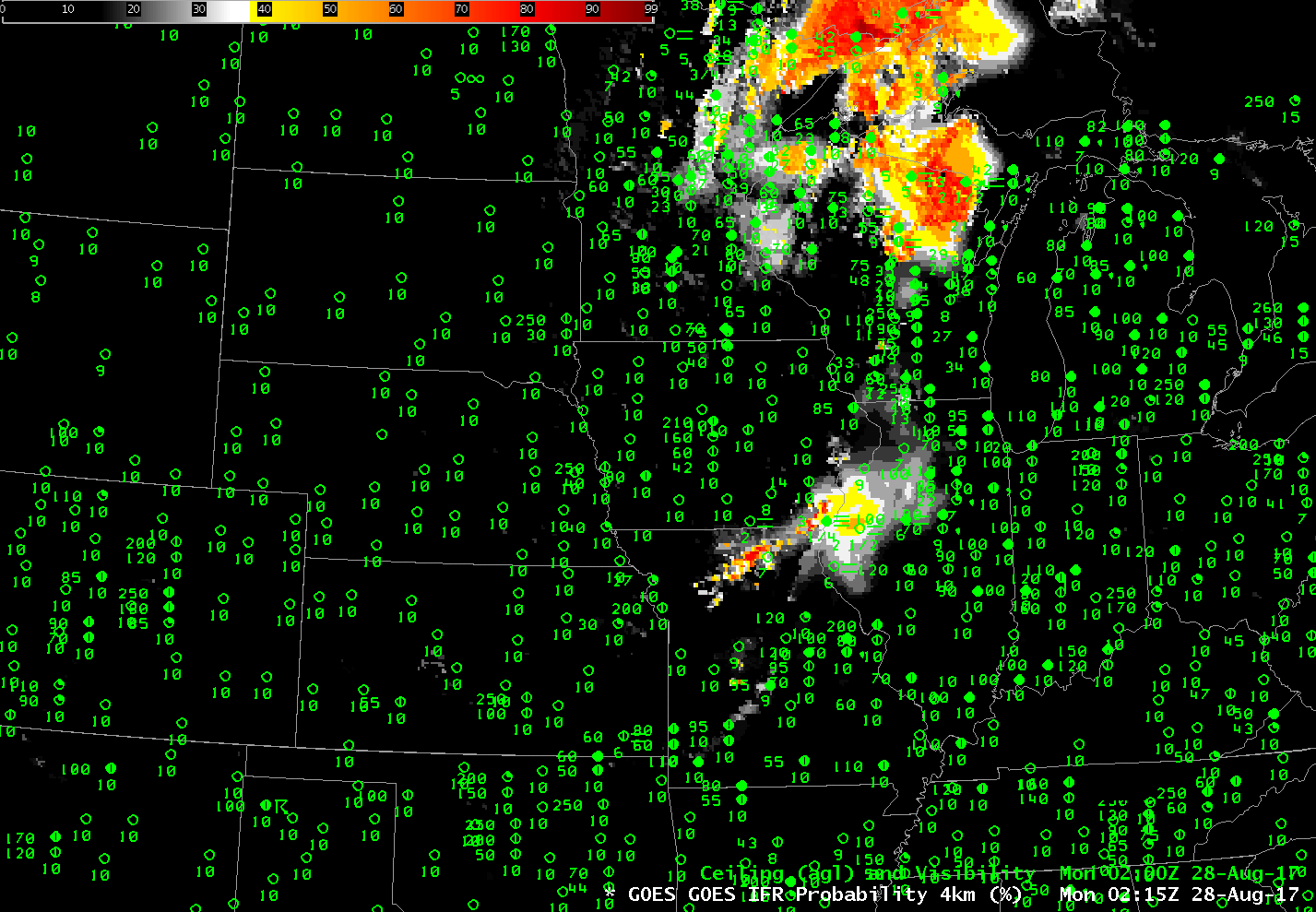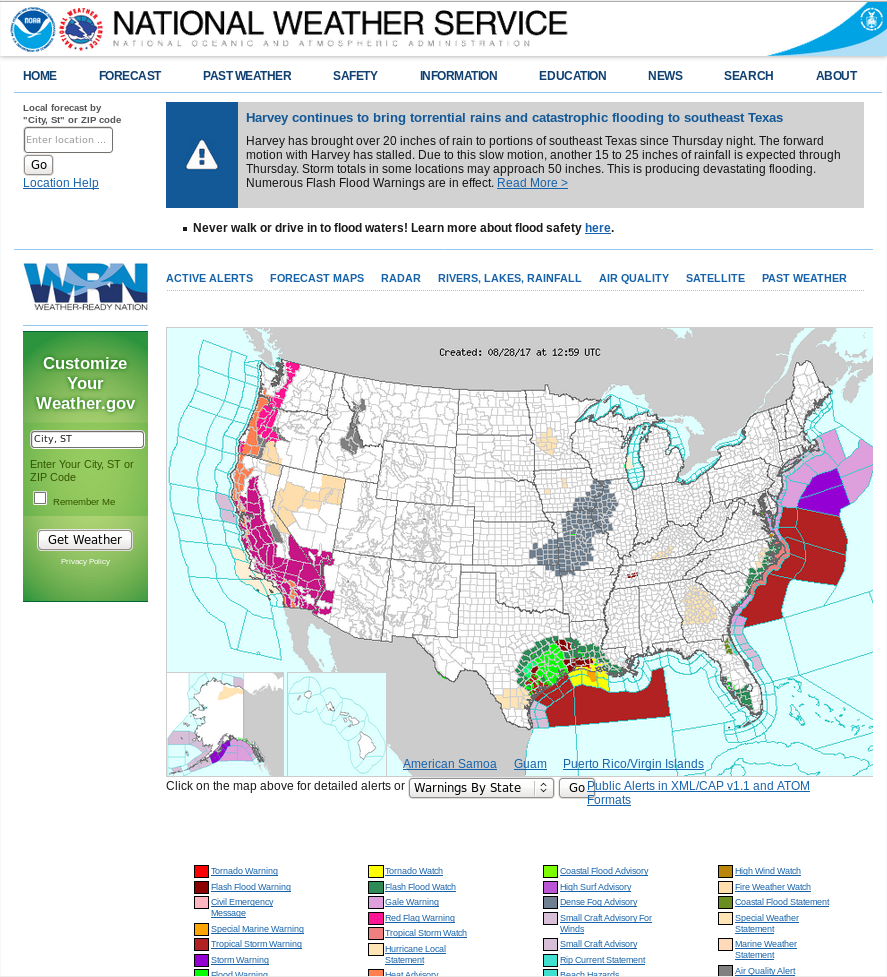
GOES-16 Brightness Temperature Difference field (10.3 µm – 3.9 µm) from 0417 to 1357 UTC on 28 August 2017 (Click to animate)
GOES-16 data posted on this page are preliminary, non-operational and are undergoing testing.
GOES-16 Brightness Temperature Difference fields (10.3 µm – 3.9 µm), above, show the development of stratus clouds (made up of water droplets) over the Plains during the morning of 28 August 2017. The Brightness Temperature for 10.3 µm is warmer than that for 3.9 µm during the night because cloud water droplets do not emit 3.9 µm radiation as a blackbody but those same cloud water droplets do emit 10.3 µm radiation more nearly as a blackbody would. The conversion from sensed radiation to brightness temperature does assume blackbody emissions; thus, the 3.9 µm brightness temperature is cooler where clouds made up of small water droplets exist. The animation above shows stratus clouds developing over Missouri and adjacent states. Dense Fog Advisories were issued near sunrise for much of the region (see image at bottom of this blog post) and IFR Conditions were widespread.
The animation above shows a positive signal over the western High Plains from Kansas northward to North Dakota. (Click here for the view at 1132 UTC on 28 August).
GOES-R IFR Probabilities are computed using Legacy GOES (GOES-13 and GOES-15) and Rapid Refresh model information; GOES-16 data will be incorporated into the IFR Probability algorithm in late 2017
How did GOES-R IFR Probability fields capture this event? The animation showing the fields every 30 minutes from 0215 through 1345 UTC on 28 August 2017, below, shows the development of High Probabilities in the region where Dense Fog was observed. There is a signal along the western High Plains, but it has low Probability; a conclusion might be that thin stratus has developed but that the Rapid Refresh model does not suggest that widespread low-level saturation is occurring. As the sun rises, the signal over the western High Plains disappears. Click here for a toggle between the GOES-R IFR Probability and the GOES-16 Brightness Temperature Difference field at 1115 UTC.


